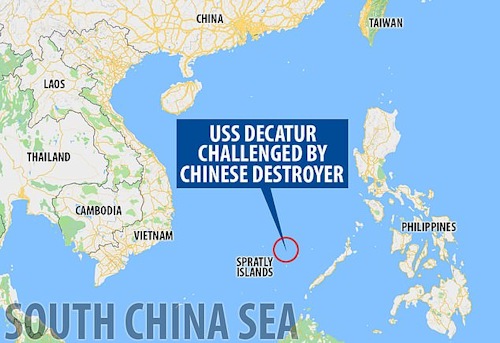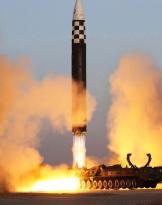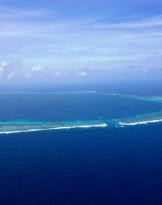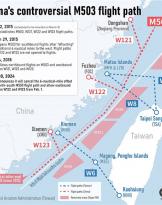In the hours when, last Sunday, this paper prepared a report (we hope) detailed on the escalation of tension underway in the South and East China Sea between the USA and China (v.articolo), in those same waters was yet another moment of confrontation between the two powers, which risks further aggravating the level of opposition.
It happened in the early afternoon, when the USS destroyer Decatur1, in navigation near Gaven Reef2 (Nanxun Jiao, 南薰 礁) - an atoll part of the Spratley Islands archipelago, occupied by China in the 1988 - was approached about 40 m away from a Chinese Luyang II class destroyer3, which forced him to implement a sudden maneuver to avoid the collision.
A spokesman for the VII Fleet (Pacific) described the Chinese one as "unsafe and unprofessional manouver".
The US vessel was in those waters as part of the freedom of navigation operations that the US is conducting along with France, the UK and other coastal states.

The Chinese defense minister immediately condemned "the aggressive policy of the United States, for the continuous violations of the Chinese territorial waters, which put at risk the stabilization work carried out by Beijing with the support of the ASEAN countries4.
The event, on the other hand, provoked the firm reactions of the Pentagon, which in response confirmed the continuation of the operations conducted in the waters and in the skies claimed by Beijing to affirm the freedom of navigation.
In a speech delivered on October 4 at the Hudson Institute, Washington DC think tank, - reports Reuter5 -, US Vice President Pence (photo) confirmed that the United States "will continue to operate wherever allowed by international law and required by national interests " adding that America "He will not be intimidated and will not take a step back".
The US therefore confirms their commitment to preserving in these waters the widest freedom of navigation, in support of the security of all the coastal nations and of the norms of international law that China has repeatedly expressly declared not having to apply in the waters. which considers "territorial" as historically Chinese.

Beijing advances, territorial claims on about 80% of the Chinese sea, on the basis of a dividing line6 defined unilaterally, which from time to time triggers crises with the other coastal countries: Brunei, Vietnam, Philippines, Malaysia and Japan.
The facts of the last days do not introduce any element of novelty in the general situation of the area, since they are mere demonstrations of force on both sides. They are certainly connected to the long-standing war between Beijing and Washington, and more specifically to the statements with which, a few days ago, President Trump announced the imposition of additional tariffs for 200 billion dollars to start - see case - from Monday 1 October, the day after the event that involved the USS Decatur. They provide, however, a clear idea of a certain fluidity of the current situation, and the demonstration of how the comparison between "the two" superpowers continues to develop on a plurality of levels - political, military, economic, communicative - of the state domain.
(photo: US Navy / web)
4 Association of Southeast Asian Nations - https://asean.org












